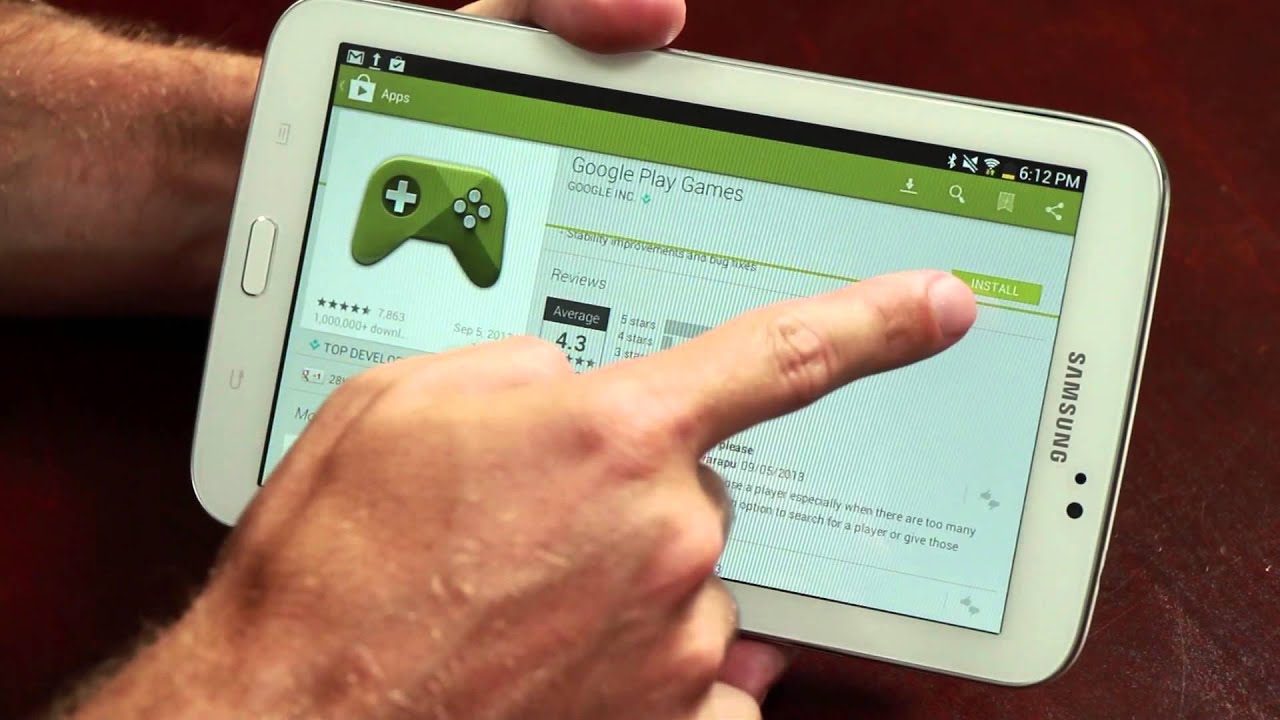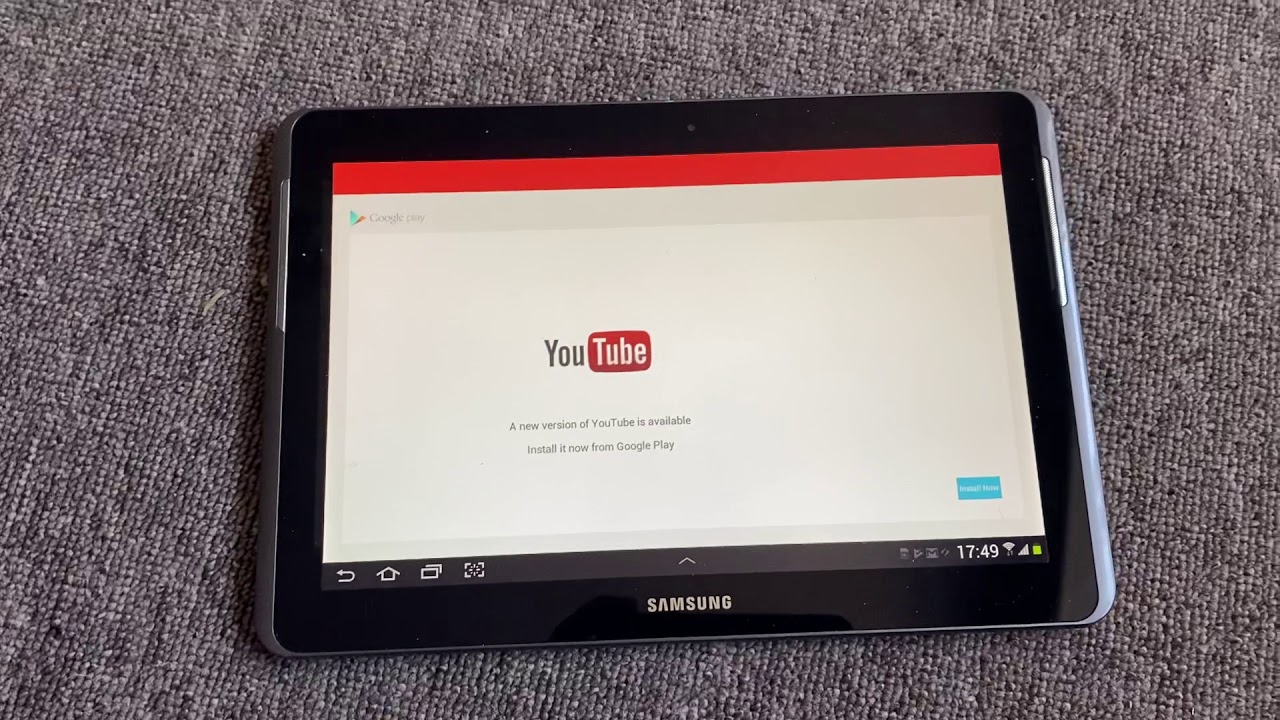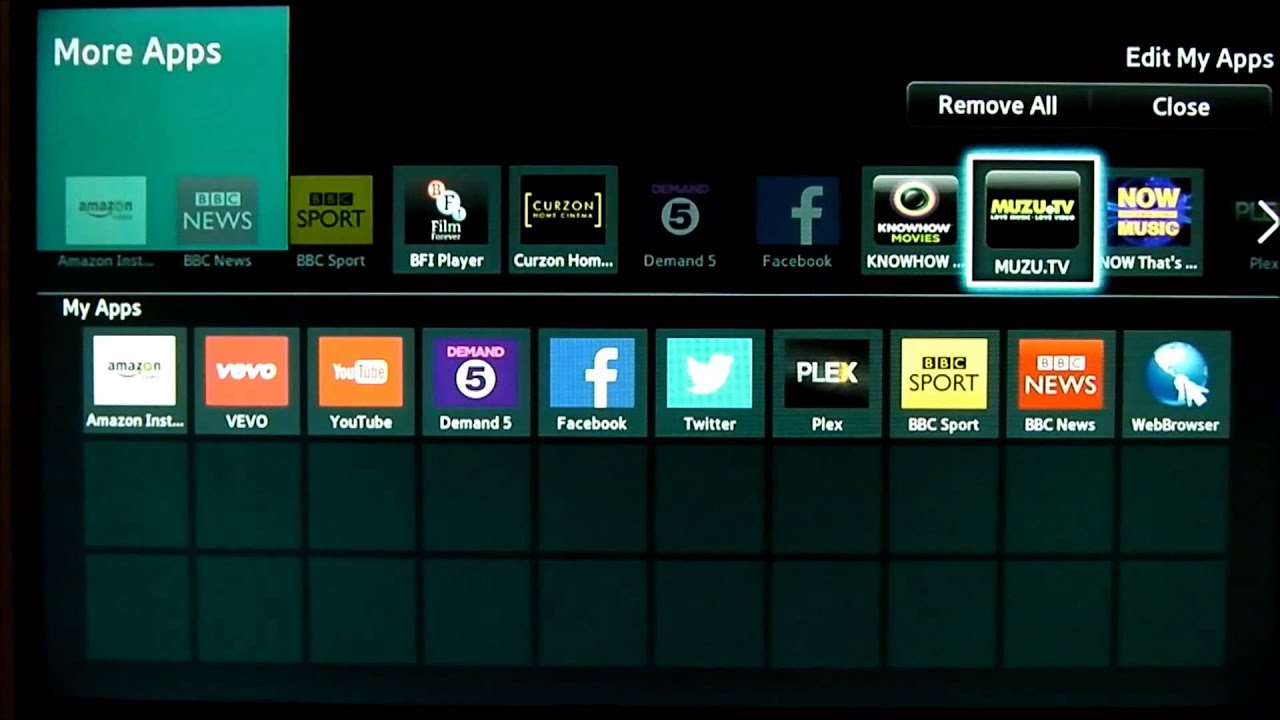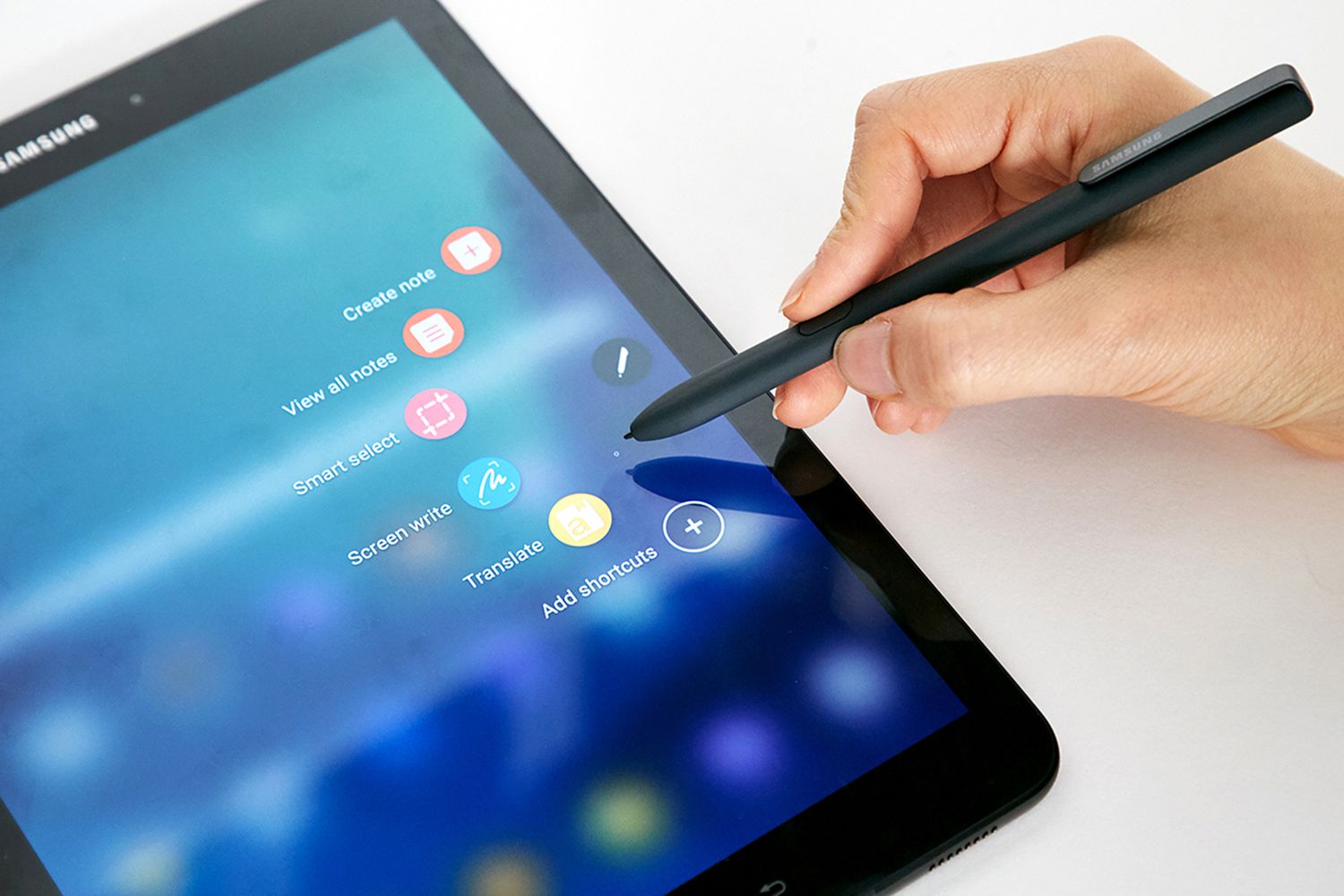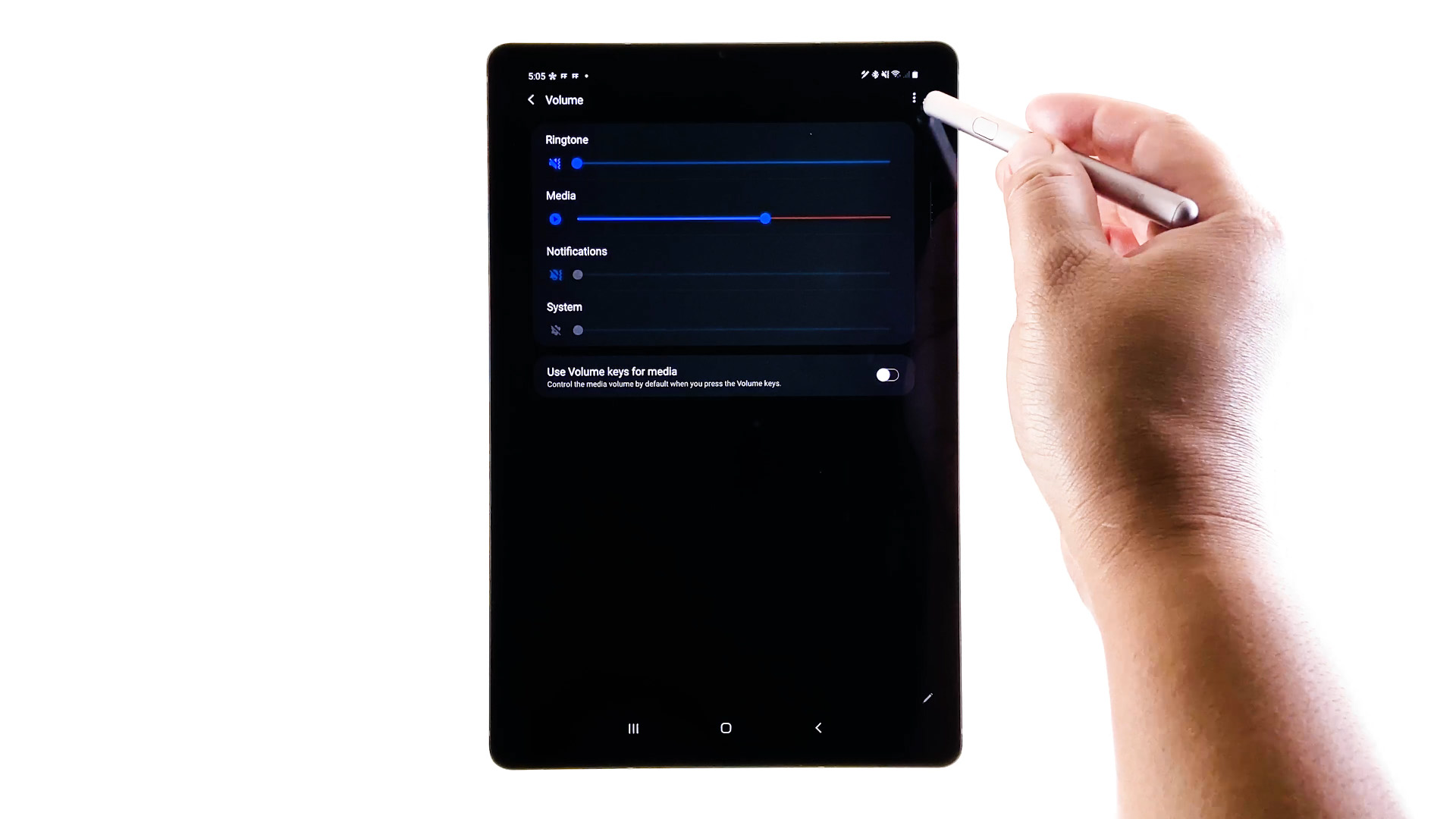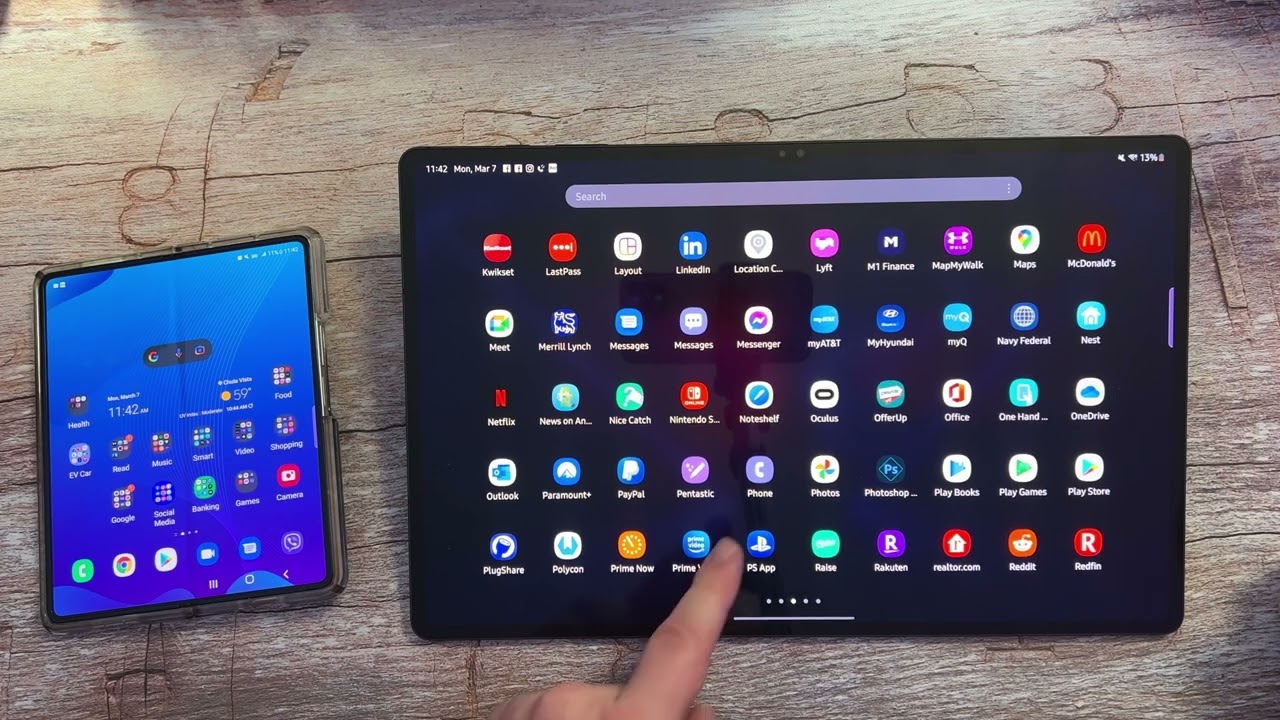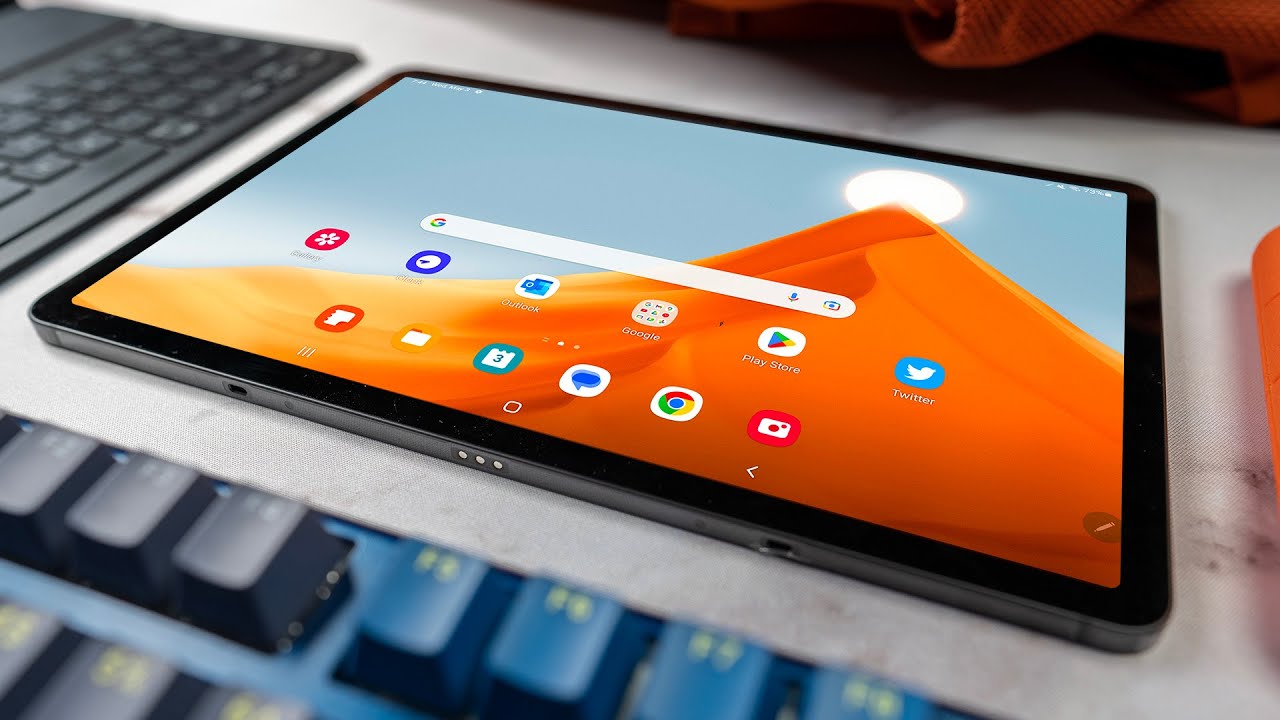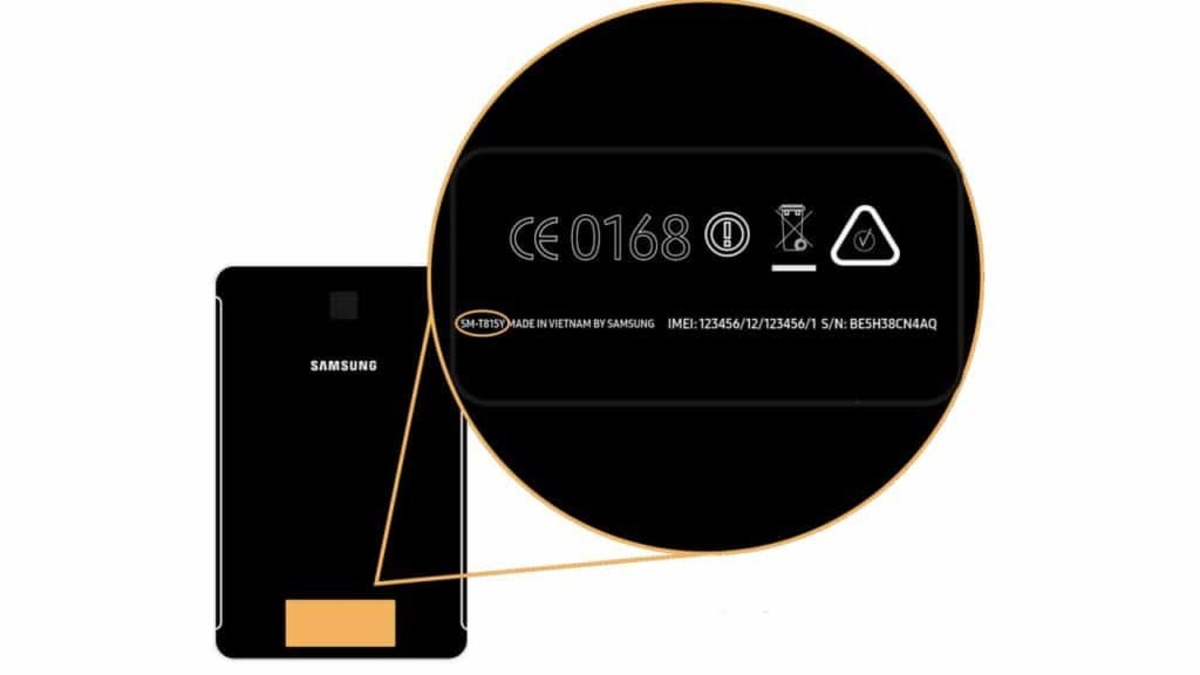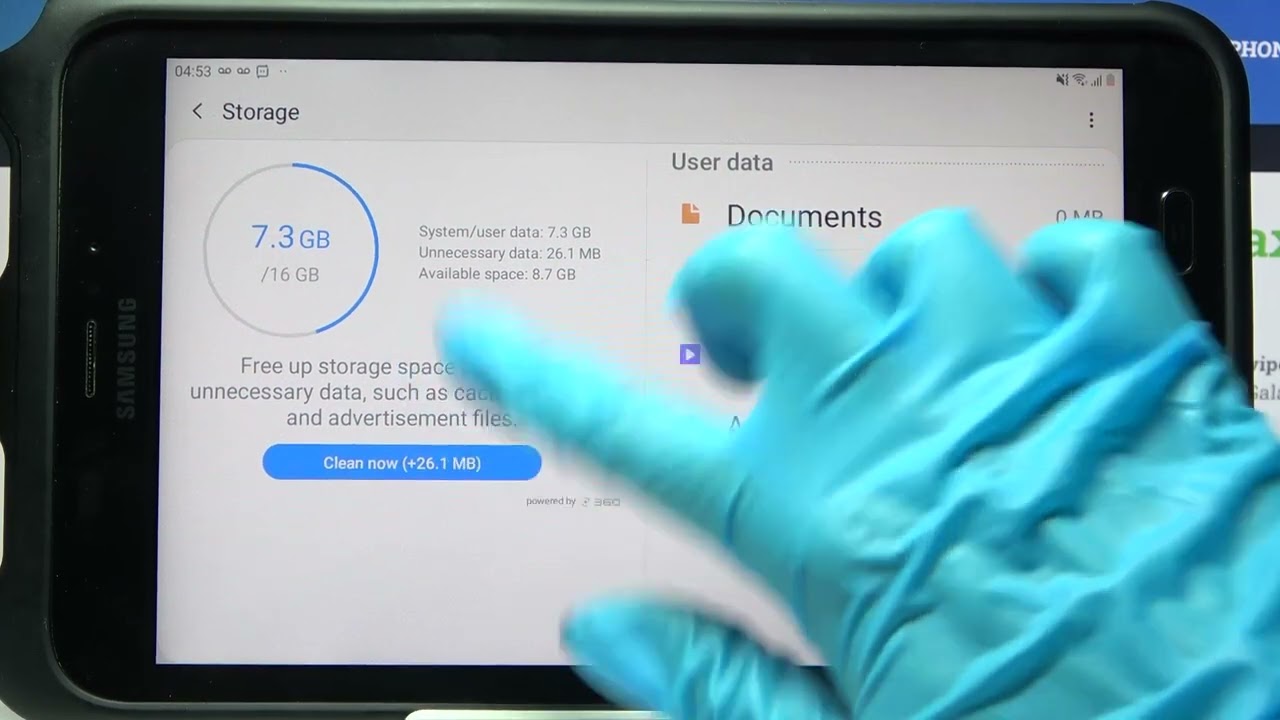Introduction
Welcome to this article that aims to address the frustrating issue of why your Samsung tablet is not downloading apps. Owning a Samsung tablet offers a multitude of benefits, including easy access to a vast array of apps that enhance your productivity, entertainment, and overall user experience. However, when you encounter issues preventing you from downloading apps, it can be both puzzling and inconvenient. In this article, we will explore several possible reasons for this issue and provide you with solutions to get your Samsung tablet back on track.
Before we delve into the troubleshooting methods, it is important to note that while the steps outlined here are general solutions, the exact procedure may vary depending on your specific Samsung tablet model and the version of Android it is running. We recommend checking the Samsung website or consulting the user manual for your device for model-specific instructions, if needed.
Now, let’s explore some of the common reasons why your Samsung tablet might be experiencing difficulties in downloading apps. By identifying the root cause of the problem, we can implement the appropriate solutions to resolve it.
Insufficient Storage Space
One of the most common reasons why your Samsung tablet may not be able to download apps is due to insufficient storage space. Apps take up a significant amount of space on your device, and if your tablet’s internal storage is near full capacity, it can hinder the installation of new apps.
To check the storage status of your tablet, go to the Settings menu and find the Storage or Device Care option. Here, you will be able to see how much space is available on your device. If you find that your storage is almost full, it is time to free up some space.
Start by deleting unnecessary files and apps that you no longer use. Review your gallery for any photos or videos that you can safely remove or transfer to cloud storage. Additionally, clear the cache of apps that consume a significant amount of space. This can be done by going to Settings > Apps and selecting the app you wish to clear the cache for.
If freeing up space on your internal storage is not enough, consider moving some of your apps to an external SD card if your tablet supports it. This will help to alleviate the storage burden on your device’s internal memory. To move apps to the SD card, go to Settings > Apps, select the app, and choose the option to move it to the external storage.
By ensuring that you have sufficient storage space on your Samsung tablet, you can facilitate the smooth installation and download of new apps without encountering any issues.
Outdated Operating System
If your Samsung tablet is not downloading apps, it could be due to an outdated operating system. Manufacturers regularly release software updates to improve device performance, enhance security, and fix bugs. Outdated operating systems may not be compatible with the latest app versions and can cause conflicts or errors during the download process.
To check if your Samsung tablet has an available software update, go to the Settings menu and navigate to the Software Update or System Update section. Here, you can manually check for updates and download and install them if they are available. Keep in mind that larger updates might require a Wi-Fi connection to complete the installation.
If an update is available, follow the on-screen prompts to install it. After the update is complete, try downloading the app again to see if the issue is resolved. Updating your operating system can often fix compatibility issues and provide a smoother app downloading experience.
In some cases, your Samsung tablet may no longer receive software updates due to its age or manufacturer’s policy. If this is the case, you may need to consider alternative solutions, such as performing a factory reset or rooting your device to install a custom ROM that supports the desired app versions. However, these methods can be more complex and carry potential risks, so proceed with caution and ensure you have a backup of your data before attempting them.
Keeping your Samsung tablet’s operating system up to date ensures that it is equipped with the latest features and improvements, as well as compatibility with the most recent app releases.
Connection Issues
A common reason why your Samsung tablet may not be able to download apps is due to connection issues. Before proceeding with any troubleshooting steps, ensure that you have a stable and reliable internet connection.
If you are connected to Wi-Fi, verify that you are within range of the network and that the signal strength is strong. Try disconnecting from the network and reconnecting after a few seconds to refresh the connection. Additionally, restart your router or modem to resolve any temporary network issues.
If you are using mobile data, check your data plan to ensure that you have enough data allowance to download apps. Also, make sure that the mobile data option is enabled in your tablet’s settings. Consider resetting your network settings, which can help resolve any connectivity issues. To do this, go to Settings > General Management > Reset > Reset Network Settings.
If you are still experiencing connection issues, it may be worth trying a different network or connecting to a public Wi-Fi hotspot to see if the problem persists. This can help determine if the issue is specific to your network or device.
It is also worth checking if the app you are trying to download specifically requires a Wi-Fi connection. Some apps have restrictions on downloading over cellular data to prevent excessive data usage. If this is the case, connect to a Wi-Fi network to download the app.
If you have tried all of these steps and are still encountering connection problems, it is advisable to contact your internet service provider or mobile network operator for further assistance. They can help troubleshoot any network issues that may be affecting your device’s ability to download apps.
Disabled App Downloading
If you find that your Samsung tablet is not downloading apps, it is possible that the app downloading feature has been disabled on your device. This can happen accidentally or due to certain security settings or restrictions.
To check if app downloading is disabled, go to the Settings menu and navigate to the Apps or Applications section. Here, look for the option labeled “App Permissions” or a similar name. Within this section, you should find a list of permissions that apps can request, such as camera access, location, and storage. Make sure that the permission for app downloading is enabled.
Another possible reason for disabled app downloading is the presence of parental controls or content filters. These settings are usually put in place to restrict access to certain types of content or apps, particularly for child users. If you have enabled such controls, you may need to adjust the settings to allow app downloads.
To manage parental controls or content filters, go to the Settings menu and find the option labeled “Parental Controls,” “Content Restrictions,” or similar. Here, you can adjust the settings to allow app downloads or remove any specific app restrictions that may be preventing downloads.
Additionally, if you are using a work or school account on your Samsung tablet, the IT administrator might have disabled app downloads for security reasons. In this case, you should contact your IT support or system administrator to inquire about any restrictions and seek their assistance in enabling app downloads if necessary.
By checking and adjusting the app permissions, parental controls, or content restrictions on your Samsung tablet, you can ensure that app downloading is enabled and resolve any issues that may be preventing the installation of new apps.
Google Play Store Issues
If you are experiencing difficulties in downloading apps on your Samsung tablet, the issue may lie with the Google Play Store itself. The Google Play Store is the primary marketplace for Android devices, including Samsung tablets, and it is responsible for managing app downloads and updates.
One common issue is a misbehaving or stuck Google Play Store app. To resolve this, start by clearing the cache and data of the Google Play Store. Go to the Settings menu, find the Apps or Applications section, and locate the Google Play Store app. Tap on it, and within the app settings, select the options to clear the cache and storage data. Restart your device and try downloading the app again.
If the issue persists, you can try force-stopping and disabling the Google Play Store app temporarily. Go to the app settings as described above, and this time select the options to force stop and disable the app. Wait a few moments, then re-enable the Google Play Store and try downloading the app again.
Occasionally, the Google Play Store may have a temporary server issue or update that hinders app downloads. To check if this is the case, open the Google Play Store app and go to the “My apps & games” section. Look for any updates for the Google Play Store app itself and install them if available. This can resolve any issues arising from outdated or buggy versions of the app.
If none of these solutions work, it is worth considering whether you are using the correct Google account on your Samsung tablet. Sometimes, if you have multiple Google accounts linked to your device, the app download may be associated with a different account that does not have the necessary permissions or payment methods. Double-check your Google account settings in the device settings menu to ensure that the correct account is active.
In rare cases, a factory reset of your Samsung tablet might be necessary to resolve persistent Google Play Store issues. However, keep in mind that this will erase all data on your device, so be sure to back up your important files and information beforehand.
By troubleshooting and addressing any issues related to the Google Play Store on your Samsung tablet, you can overcome barriers preventing successful app downloads and enjoy a seamless and reliable app downloading experience.
Corrupted Cache or Data
If you are struggling with app downloads on your Samsung tablet, it could be due to corrupted cache or data on your device. Cache and data are temporary files that apps use to remember certain settings or information. Over time, these files can get corrupted or become outdated, leading to issues with app installation.
To fix the issue, you can start by clearing the cache and data of the individual app you are trying to download. Go to the Settings menu, navigate to the Apps or Applications section, and select the specific app. Within the app settings, you will find an option to clear the cache and data. Tap on these options to remove any corrupted or unnecessary files associated with the app.
If clearing the cache and data of the specific app does not resolve the issue, you can try wiping the cache partition of your Samsung tablet. This process clears the system cache, which can sometimes become fragmented or contain outdated data. To perform this action, you will need to enter the device’s recovery mode, which can vary depending on the specific Samsung tablet model. Consult the user manual or the Samsung website for instructions on how to access recovery mode for your device.
Once in recovery mode, use the volume buttons to navigate the menu and select the option to wipe the cache partition. Confirm your selection, and the process will begin. After it is complete, reboot your device and try downloading the app again.
If the issue persists, you can consider performing a factory reset of your Samsung tablet. This will erase all data on your device and restore it to its original settings. Before proceeding with a factory reset, make sure to back up your important files and information as it cannot be recovered once the reset is complete. You can initiate a factory reset from the Settings menu, typically under the System or General Management section.
By clearing the cache and data of specific apps, wiping the cache partition, or performing a factory reset on your Samsung tablet, you can resolve any issues related to corrupted cache or data and improve the app downloading process on your device.
Security Settings Restrictions
If your Samsung tablet is not downloading apps, it’s possible that security settings on your device are restricting the installation of third-party or unknown source apps. Android devices have a security feature called “Unknown Sources,” which prevents the installation of apps that are not downloaded from the official Google Play Store.
To check if this security setting is enabled, go to the Settings menu on your Samsung tablet and navigate to the Security or Biometrics and Security section. Look for the option labeled “Unknown Sources” or “Install unknown apps.” If this setting is disabled, it means that only apps from the Google Play Store are allowed to be installed on your device.
If you want to download apps from other sources, such as third-party app stores or APK files, you will need to enable the Unknown Sources setting. Keep in mind that installing apps from unknown sources can pose a security risk, as they may contain malware or other malicious software. Exercise caution and only download from trusted sources.
After enabling the Unknown Sources setting, you will be able to download and install apps from sources other than the Google Play Store. However, it is advisable to disable this setting once you have finished installing the desired app to maintain the security of your device.
Another security setting that may affect app downloads is the “Verify Apps” or “Play Protect” feature. This feature scans apps for potential security threats before and after installation. While this is a useful security measure, it may impact app downloads if a particular app is flagged as potentially harmful.
To check and adjust the Verify Apps setting, go to the Google Play Store app, open the Menu, and select Settings. Look for the option labeled “Play Protect,” “Scan device for security threats,” or similar. Here, you can disable or adjust the scanning feature to allow the installation of apps that might be falsely flagged as threats.
By reviewing and adjusting the security settings on your Samsung tablet, such as enabling Unknown Sources and modifying the Verify Apps feature, you can overcome any restrictions that may be preventing app downloads and installation.
SD Card Issues
If your Samsung tablet is not downloading apps, it is worth considering if there are any issues with your SD card. SD cards are commonly used to extend the storage capacity of devices and can sometimes cause problems with app installations.
First, ensure that your SD card is inserted properly and securely into the SD card slot of your Samsung tablet. Sometimes, a loose or improperly inserted SD card can cause issues with app downloads. Remove the SD card, clean it gently, and reinsert it carefully to ensure a proper connection.
If your tablet has the option to store apps on the SD card, check if the app you are trying to download is set to be installed on the SD card. To do this, go to the Settings menu, navigate to the Apps or Applications section, and select the specific app. Within the app settings, you may find an option to change the storage location. Make sure it is set to internal storage if the app is not downloading to the SD card properly.
It is possible that the SD card itself is corrupted or damaged. To verify this, try removing the SD card from your Samsung tablet and insert it into another device or a card reader. If it is not recognized or inaccessible, it may indicate a problem with the SD card. In such cases, you may need to replace the SD card with a new one and transfer any important data to the new card.
Additionally, ensure that the SD card is formatted correctly and is compatible with your Samsung tablet. Some devices have specific requirements regarding the type or capacity of SD cards they can support. Refer to the user manual or the manufacturer’s website to determine the compatible specifications for your tablet.
Lastly, keep in mind that certain apps may not be able to be stored or downloaded onto an SD card due to app restrictions or compatibility issues. Check the app’s requirements and recommendations to ensure compatibility with external storage.
By checking the proper insertion of the SD card, adjusting app storage settings, verifying the card’s condition and compatibility, and considering app restrictions, you can address any SD card-related issues and enable successful app downloads on your Samsung tablet.
Conclusion
Dealing with an issue where your Samsung tablet is not downloading apps can be frustrating. However, by troubleshooting the possible causes and implementing the appropriate solutions, you can overcome these obstacles and get your tablet back to smoothly downloading new apps.
Throughout this article, we explored some common reasons why your Samsung tablet may have difficulties downloading apps. We discussed how insufficient storage space, outdated operating systems, connection issues, disabled app downloading, Google Play Store issues, corrupted cache or data, security settings restrictions, and SD card issues can all play a role in preventing app downloads.
To resolve these issues, we provided several troubleshooting steps and suggestions. These include freeing up storage space, updating the operating system, checking and fixing connection issues, ensuring app downloading is enabled, addressing Google Play Store concerns, clearing cache or data, adjusting security settings, and troubleshooting SD card problems.
Remember, it’s essential to consider your specific Samsung tablet model and Android version when applying these solutions, as some steps may differ based on these factors. Always refer to the user manual or consult the Samsung website for specific instructions related to your device.
By following the troubleshooting steps outlined in this article, you can overcome the challenges preventing your Samsung tablet from downloading apps. Enjoy exploring new apps, improving your productivity, and enhancing your overall tablet experience!







